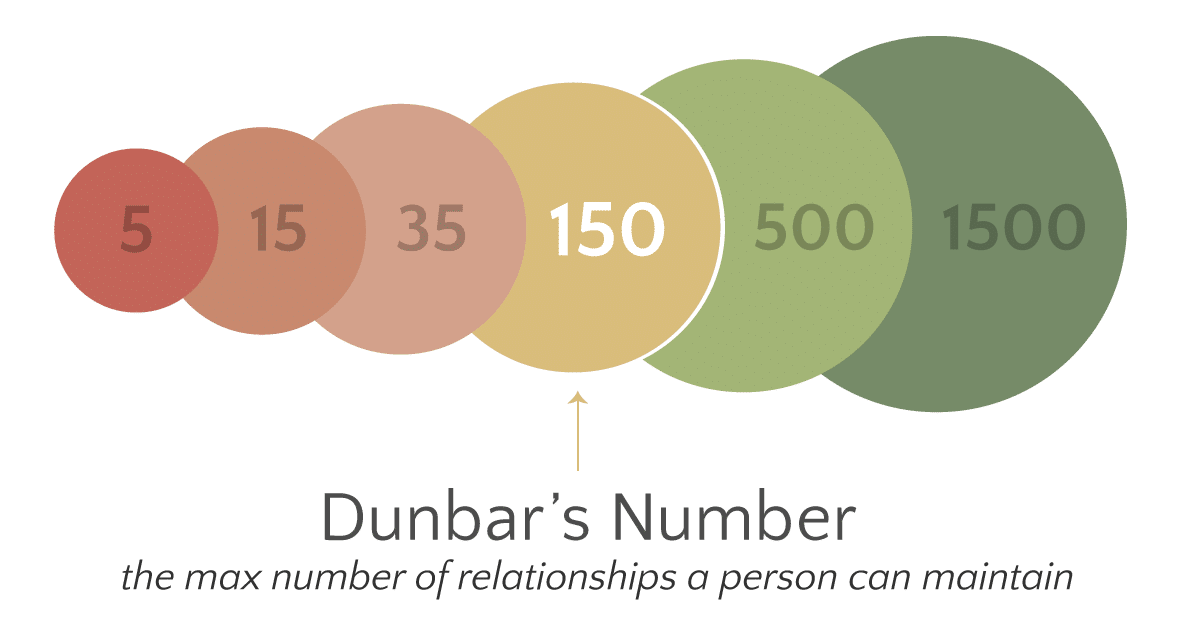A strong network is not only incredibly powerful, it’s a joy-multiplier.
The best time to build a strong network is before you need it. This is especially true for those who aren’t natural connectors.
I like to think of a “network” as something different than just friends. Think of your network as the people you turn to for help, for inspiration, for connections, for resources, and for impact.
Your network is the group of people you get stuff done with.
Networking is NOT meeting someone at an event and handing them your business card. That’s just being a bad sales person.
I’m in no way a master networker, but I have spent years building a network. I’ve made every mistake in the book but I’ve also learned a few things along the way.

Here are a few of my favorite tips when it’s worked well:
1. Make a Human Connection
Don’t Guru on people: Be Interested, more than Interesting. When is the last time someone asked you what your story is, and listened intently if they cared? It makes an impact.
2. Grow by Giving
> Find out people’s hopes and goals. Give them resources and connections that help them get where they are going. If you do this, you’ll automatically be in the 1% of people in their life.
> Practice the NOW Habit: where possible, make the connection NOW by texting or emailing the intro with them standing there. This helps you avoid the trap of great hopes and plans that you never follow through on. Plus, you get it done in one fell swoop without adding to your to-do list and giving you a burden.
3. Look for The Karass
I used to think that networking was just going around trying to make friends. Now I realize that’s not exactly what it is.
Not everyone will be a natural connection, but when you meet someone in The Karass, you’ll know it and you’ll likely start working on things together. These are not just friends or family, but “The Karass” is that group of people already connected to what you’re doing, as if orchestrated by an invisible hand. No one owns “The Karass”, you’re either in it or not in it. Your goal is to find those people connected to The Karass. Sounds mystical, doesn’t it?
(thanks to Kurt Vonnegut/Cat’s Cradle and my friend Will Gray for helping inspire the term “Karass)
4. Stop only networking up
It’s ego-centric to only focus on making connections that can help you, and people can see through that.
Instead, network out and network down.
You can’t help everyone in the world, but you can help someone. Look for younger folks, or older, or people you wouldn’t normally connect with such as people in a different culture or those new to town. I’ve been constantly surprised at how mutually beneficial those relationships can be.
5. The Gold is in the Follow-Up and Follow-Through

> It’s estimated that it takes over 50 touch-points before someone becomes a trusted resource. Playing the long game has always worked out much better for me than going for quick results.
> Many make big promises, but few follow through. Be one of the ones that follow through and you’ll make an impact. If you say you’ll send them an introduction, send it to them. Nothing erodes trust faster than unkept promises.
> Track and systematize: It’s proven that a person can only keep track of around 150 relationships in their network. I use technology to track relationships. Use a CRM (Customer Relationship Management software) so you can log conversations, exchanges, and set reminders.
> Send a personal email newsletter – this helps people feel connected to what you are up to and helps you “Karass-fish” for other like-minded folks out in the universe. That’s part of why I send Let’s Grow emails every week. It helps me stay connected with folks I care about.
> Schedule regular times to follow up. Pro tip: don’t just “check-in”, rather provide value when following up. “Jane, I know you’re trying to get to #1 on the list of places to work, here’s a helpful article I came across that I thought you might find enlightening” is so much better than, “Hey, how’s it going?”
> Practice On-The-Fly (OTF’s) connections. Example: “I know you’re into cocktails and I saw this interesting cocktail menu at the hotel I’m staying at in Denver – I thought you’d enjoy a copy of it, I hope you enjoy!”
“OTF’s” mean you don’t wait to send the text, you send it now, while you’re thinking of someone. I’ll often send a text message while driving by a friend’s place of business or neighborhood, with a picture letting them know I’m thinking about them/praying for them.
> Send phone videos – it makes you stand out, and is personal. I regularly send videos to clients and friends while trail running. It’s where I get my best inspiration, so when they come to mind or when I have an idea for something that could help them, I’ll record a video right then and there while running and send it to the. OTF!
6. Make Thank You’s a habit
> It’s surprising how rare it is to receive a Thank You note after you do a favor for someone. It’s not only unkind, but it doesn’t make people want to help you.
> Handwritten notes are particularly impactful, and are an opportunity to bless the giver.
>Next level tip: make it a “TSP”. Make it Truthful, Specific, and Positive for maximum effect.
7. Practice Them-Centric Gifting
A few tips from John Ruhlin of Gif*ology:
> Something with your logo on it is not a gift, that’s marketing.
> Food, wine, and chocolate are nice but it gets eaten and forgotten so food is not the best gift.
> Send gifts outside of the normal times (not Christmas, not their birthday) – it surprises and stands out.
> Don’t make it transactional, expect nothing in return. Give freely, openly.
> Give them something they’ll use over and over again such as a belt, a quality set of kitchen knives, or a wine stopper.
> Next level: give their spouse a gift they’ll care about like a set of Cutco knives for their kitchen (quality, lifetime guarantee, will use them over and over and think about you)
8. Develop a Power Group
Dunbar’s Law purports that most people can only really maintain a network of around 150 relationships. After that it gets too loose and disconnected. About 15 people can be close friends/connections, and only around 5 can be super close like family.
You can only go so deep with 150 people.

Within your “network” of around 150 people, I like the idea of a “Power Group” which is a small group of 3-5 where you go really deep together. This could be strategic referral partners for your business, advisors, or a faith and fellowship group. Having a Power Group allows you to go super deep, not just wide.
If you’d like to read further on any of this stuff, Here are a few great resources that have been an inspiration for this article:
Bluefishing: the art of making things happen
Gift*ology: the art and science of using gifts to cut through the noise
Note: if you benefited from this article in any way, would you mind forwarding it to someone you care about so they could benefit from it as well? Count it as your first “OTF Connection” and who knows, you might just grow your network in the process 🙂